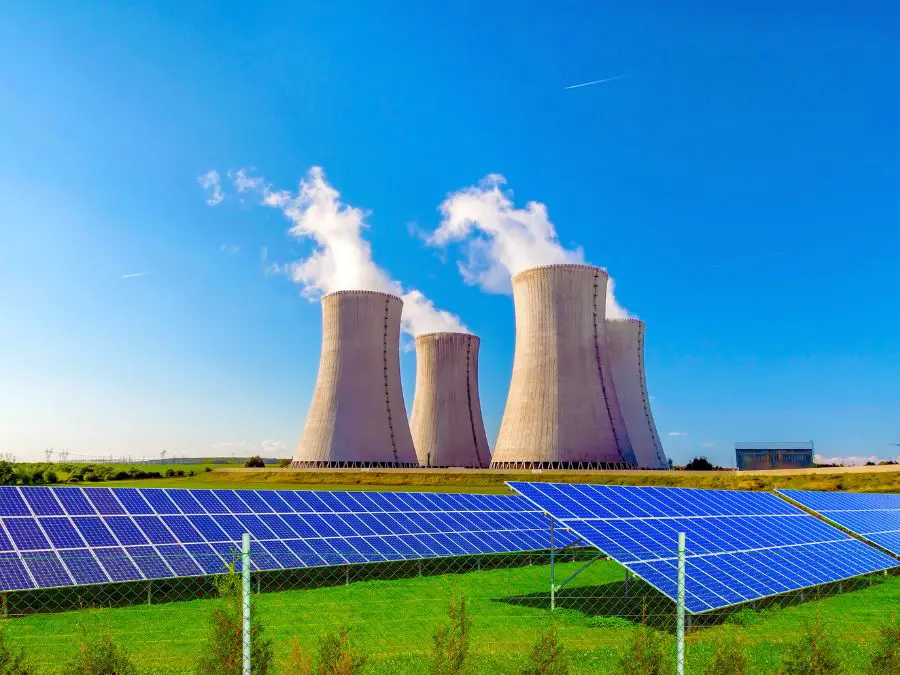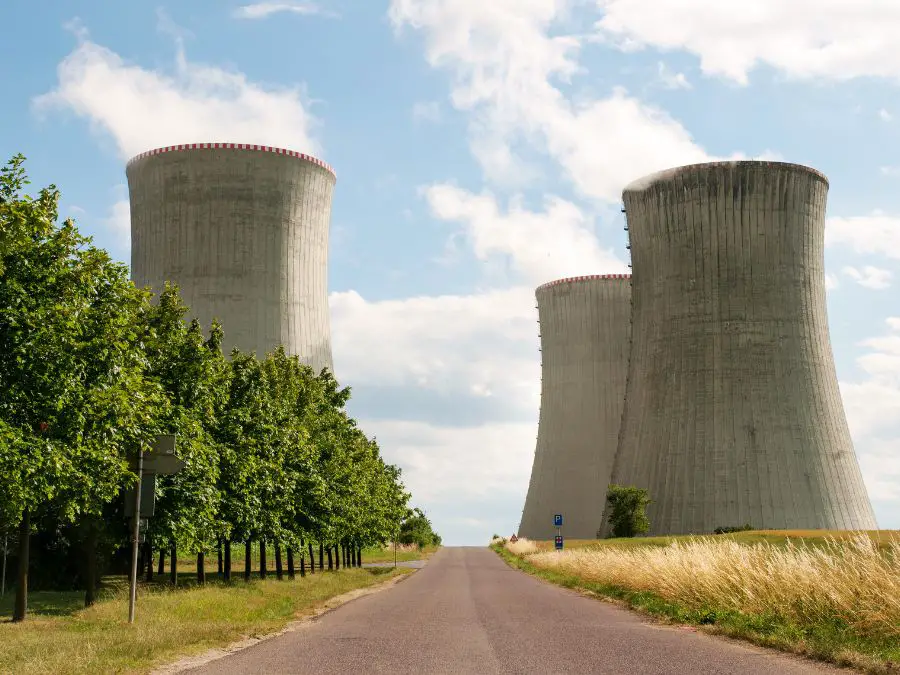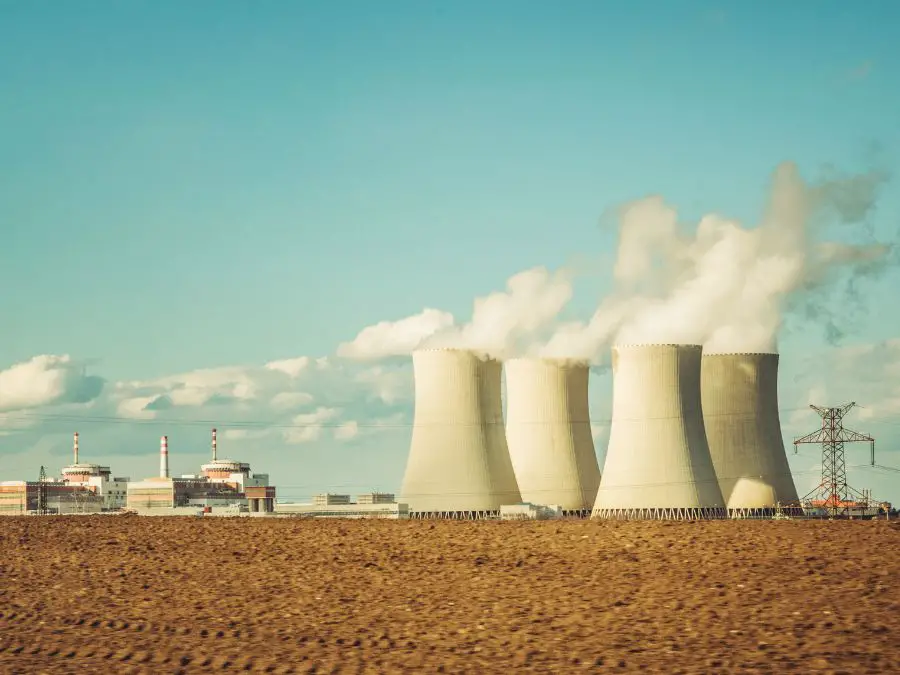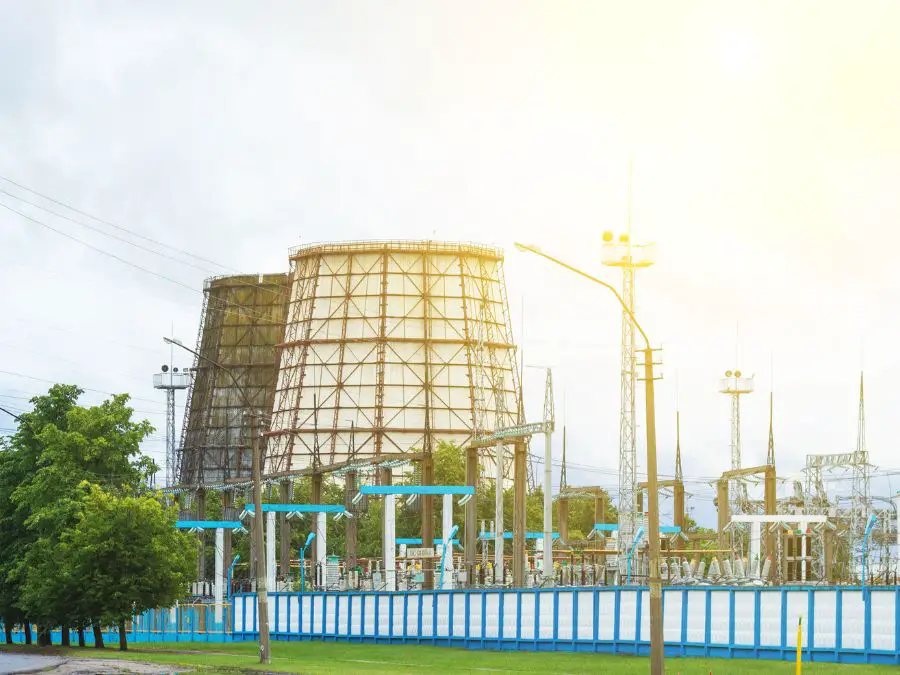Imagine a world where electricity flows like a never-ending river, powering entire cities, propelling aircraft carriers and submarines, and providing life-saving medical treatments. This dream is a reality thanks to nuclear energy. A technology that has been harnessing the power of atoms for almost a century. But as we stand on the brink of a new energy revolution, the question arises: is nuclear energy the answer to our energy needs or a ticking time bomb? From the fear of nuclear accidents to the disposal of nuclear waste, nuclear energy issues are complex and controversial.
In this article, we’ll take a closer look at nuclear energy’s history, current state, and future. We’ll weigh the pros and cons and explore some issues surrounding it.
What is Nuclear Energy
Unlocking the atom’s power is what nuclear energy is all about. Nuclear power plants harness the energy released when the nuclei of atoms are split, a process called nuclear fission. In most plants, uranium atoms are used as fuel, and when hit by a neutron, they release heat, radiation, and more neutrons.
This creates a chain reaction, where the released neutrons split more atoms and release more energy. This process is carefully controlled in power plants to generate heat, which is then used to create steam that drives turbines and generates electricity for homes and businesses.
History of Nuclear Energy
The history of nuclear energy traces back to the late 1800s with Henri Becquerel’s discovery of radioactivity. In the early 1900s, researchers such as Marie and Pierre Curie, Ernest Rutherford, and Niels Bohr took large steps in learning atomic structure and radiation. The 1940s constituted a period of time when the United States, United Kingdom, and Canada jointly started the Manhattan Project to generate the first-ever nuclear weapons.
In the 1950s, a commerical nuclear energy plant was initially built in Obninsk, Russia. Thereafter, many countries throughout the world constructed and ran nuclear power stations–including America, France and Japan. In response to worries over atomic waste material and potential accidents during the 1970s and 1980s, for quite some time there wasn’t any construction of new nuclear power plants.
Fast forwarding a few decades however we now witness a resurgence in interest due to a requirement for clean energy as well as a decrease in the cost of nuclear technology.
How Is Nuclear Energy Created? How Does It Work?
Making electricity from nuclear power is similar to using other traditional sources like coal and natural gas. They’re all called “thermal” sources, which means they use heat to create electricity. With coal, oil, or natural gas, we burn them to heat water and make steam. Then, we use the steam to turn a turbine and produce electricity.
With nuclear power, it’s the same deal, but instead of burning fossil fuels, we use a nuclear chain reaction to heat the water and make steam. The heat from splitting atoms, also known as fission, boils the water and produces the steam that turns the turbine to generate electricity. It’s a different way to create heat, but the result is the same.

Related: Solar Energy Panels, Alternative Energy Sources, How to Save Energy at Home
How Is Nuclear Energy Used?
Nuclear power is used in different places (like in around 30 states in the US and just as many countries worldwide). It’s a small part of our energy supply in the US, only making up about 20% of our electricity and 8% of our total energy use when you include things like transportation and heating. Take Maryland, for example. There are two nuclear reactors at the Calvert Cliffs Nuclear Power Plant, and 93 reactors operate throughout the country.
Issues Surrounding Nuclear Energy
Here are some of the main reasons why people aren’t too keen on using nuclear energy to make electricity:
1. Nuclear Weapons
In 1945, the atomic bombings of Hiroshima and Nagasaki brought nuclear technology to the forefront, and since then, people often associate the word “nuclear” with weapons of mass destruction.
While it’s true that some methods used to generate electricity with nuclear energy can also make nuclear weapons, most countries around the world have signed the Nuclear Non-Proliferation Treaty, which is an international treaty whose objective is to prevent the spread of nuclear weapons and weapons technology, to promote cooperation in the peaceful uses of nuclear energy, and to further the goal of achieving nuclear disarmament and general and complete disarmament.
2. Nuclear Waste
Nuclear power plants make this super dangerous stuff called radioactive waste when they make fuel while they’re running, and unfortunately continue to do so when they have already been decommissioned. Figuring out how to deal with this waste is a real headache.
Luckily, most radioactive waste (97%) is not as bad as we can imagine. It usually loses its radioactivity after a few days or weeks and can be disposed of like regular waste.
But the other 3% is super dangerous and is called high-level waste. This stuff can stay radioactive for hundreds of years, so it needs to be stored far away from people and kept in a particular facility.
3. Nuclear Accidents
There have been significant accidents at nuclear reactors since 1952, like in Kyshtym, Russia, when waste wasn’t handled properly and exploded. Or in Chernobyl, Ukraine, where the most famous nuclear accident occurred due to human mistakes. And in Fukushima, Japan, where there was an explosion after an earthquake and a tsunami.
These accidents caused a lot of radioactive material to be released into the environment, and now no one can live in the areas near the damaged reactors. Exposure to low levels of radiation for a long time is dangerous and increases the chance of getting cancer.
Pros of Nuclear Energy
These are some of the main benefits of using nuclear energy as a source of electricity.
1. Nuclear Energy Is Safe
A study by NASA from 2013 found that nuclear energy is way safer than other ways of making electricity. According to the study, atomic power causes the least amount of deaths for the amount of energy it produces.

2. Nuclear Energy Does Not Pollute the Air
One of the cool things about nuclear energy is that it can always provide electricity without polluting the air. Most of the world’s electricity comes from burning fossil fuels like coal, oil, and natural gas.
The problem with that is it sends harmful gases into the air. Nuclear energy, just like solar and wind energy, makes electricity without releasing those toxic gases. Building nuclear plants and installing solar panels and wind turbines release some of these gases, but it’s still a lot less than power plants that burn fossil fuels.
3. Rapid Advancement in Nuclear Technology
As the Earth gets warmer, we need to find ways to make electricity without putting harmful gases into the air. Nuclear energy might be one of the best options we have. The good news is that technology is making nuclear power safer, cheaper, and better than ever before.
MIT’s Center for Advanced Nuclear Energy Systems (CANES) is working on making nuclear energy better for the future. They’re researching new technologies, materials, and methods to make nuclear power more affordable and safer than it is now. They’re trying to speed up the process of making nuclear energy better and more secure for future use.
4. Provides Jobs
The nuclear sector employs about 500,000 people in the United States and generates an estimated $60 billion in the country’s GDP yearly. Nuclear power plants in the United States may employ up to 700 people at incomes 30% more than the area average. They also provide billions of dollars to local economies annually through federal and state tax income.
5. Nuclear Power Is a Dependable Source of Energy
Unlike solar and wind power, which rely on good weather, nuclear energy isn’t affected by it. Atomic power plants keep running whether it’s cloudy or windy or not. They produce steady and predictable energy output. A nuclear power plant can make energy non-stop for an entire year, making it a good investment because there’s no delay in energy production.

Cons of Nuclear Energy
While there are some benefits to using nuclear energy to make electricity, there are also some drawbacks. Here are some of those downsides:
1. It’s Expensive to Build
Even though it’s cheap to run nuclear power plants, building them is incredibly expensive, and the cost keeps increasing. From 2002 to 2008, the estimated cost to build a nuclear plant grew from $2-$4 billion to $9 billion. And most of the time, the actual cost of building a nuclear power plant exceeds the initial estimate. Plus, nuclear plants have to spend a lot of money to protect the waste they produce and to keep it in cooled structures with security measures in place. All of these costs make nuclear energy pretty costly.

2. It Can Cause Accidents
The Chernobyl accident is one of the first things that most people think of when they hear the term nuclear power plant. Although we don’t know how many people perished in the Chernobyl disaster, it’s believed that 10,000 individuals lost its life due to the long-term effects of radioactivity in the area. The Fukushima nuclear power plant disaster in 2011 demonstrated that accidents could and do occur, regardless of how safe nuclear power facilities are planned to be.
3. It Has Impacts on the Environment
Nuclear power plants aren’t just bad for the environment because they produce waste. The process of mining and preparing uranium for use in nuclear power plants still has a lot of room for improvement. Open-pit mining for uranium is safe for the miners, but it leaves behind radioactive particles, causes erosion, and can even pollute nearby water sources. Underground mining could be much better and can expose miners to high radiation levels and produce radioactive waste rock during extraction and processing.
4. It Has a Limited Supply
When considering nuclear energy, it’s important to remember that it relies on uranium and thorium to make electricity. If we don’t figure out how to make nuclear fusion or build breeder reactors before we run out of these materials, we won’t be able to use the nuclear power plants we have now neither we will able to build more in the future. In the end, nuclear power might be a short-term solution with a steep cost.
The Future of Nuclear Energy
The fear of nuclear waste and potential mishaps is understandable, but it needs to be balanced with the more significant concern of climate change. Nuclear energy is an alternative means to generate power without polluting the atmosphere. To create a better world for all, we must discover methods to produce energy while preserving our environment.
Nuclear energy has been increasing in popularity and provides efficient power sources for firms and households globally. With continued research and investment, nuclear energy could become safer and efficient in the near future.


1 thought on “Nuclear Energy: The Pros and Cons of Its Role in Climate Change Mitigation”